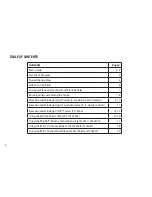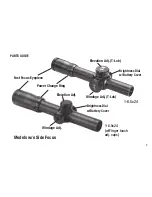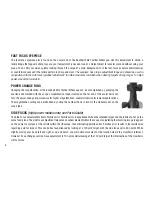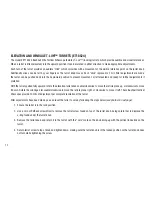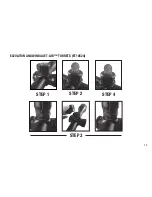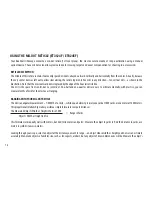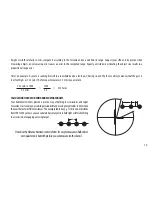
15
height or width carefully in mils, compute it according to the formula and you will find its range. Support your rifle and be precise when
measuring objects; any measuring error causes an error in the computed range. Equally, a mistake in estimating the object size results in a
proportional range error.
Here’s an example: A coyote is sunning himself in a snowfield beside a fencepost; having crossed the fence earlier, you know that the post is
four feet high, or 1.33 yards. The fencepost measures 2.5 mils in your reticle.
1.33 yards x 1000
1330
= = 532 Yards
2.5 mils 2.5
CALCULATING HOLDS FOR WIND AND MOVING TARGETS
Your horizontal mil dots provide a precise way of holding for crosswinds and target
movement. Just look in your cartridge’s wind drift and moving target tables to determine
the exact holds for different distances. The example table
(see pg. 17)
lists one-mil widths
from 100 to 500 yards, so you can calculate how many mils to hold right or left when firing
in a crosswind, or engaging a moving target.
One mil is the distance between centers of dots. It’s easy to measure in half-mils or
even quarter-mils but with practice you can measure tenths of a mil.
1 Mil


